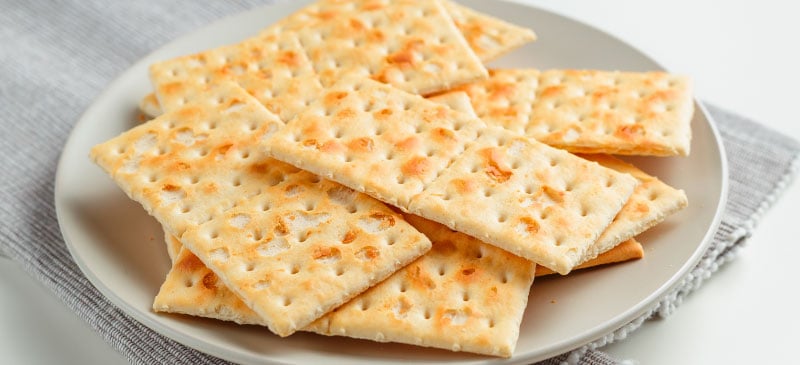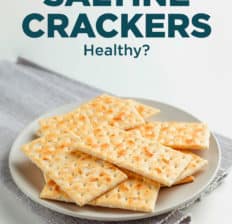This Dr. Axe content is medically reviewed or fact checked to ensure factually accurate information.
With strict editorial sourcing guidelines, we only link to academic research institutions, reputable media sites and, when research is available, medically peer-reviewed studies. Note that the numbers in parentheses (1, 2, etc.) are clickable links to these studies.
The information in our articles is NOT intended to replace a one-on-one relationship with a qualified health care professional and is not intended as medical advice.
This article is based on scientific evidence, written by experts and fact checked by our trained editorial staff. Note that the numbers in parentheses (1, 2, etc.) are clickable links to medically peer-reviewed studies.
Our team includes licensed nutritionists and dietitians, certified health education specialists, as well as certified strength and conditioning specialists, personal trainers and corrective exercise specialists. Our team aims to be not only thorough with its research, but also objective and unbiased.
The information in our articles is NOT intended to replace a one-on-one relationship with a qualified health care professional and is not intended as medical advice.
Are Saltine Crackers Healthy? Pros & Cons of Saltines
October 16, 2024

Although they provide a pleasant, salty crunch when paired with soups or cheese plates and often are recommended when you’re feeling sick or dealing with digestive issues, saltine crackers certainly wouldn’t make any healthy foods list.
They lack nutrients and are made of refined carbohydrates, so really wouldn’t be considered healthy. When consumed in small amounts, however, perhaps for that notable crunch in a recipe or to crumble over soup, they won’t throw off your diet entirely and may even help relieve nausea and upset stomach.
Saltine crackers nutrition
Saltine crackers are made with white flour, water, a leavening agent, butter and salt. They are low in calories and fat and provide little fiber.
However, they’re considered a processed food and are higher in sodium.
Five regular saltines (about 15 grams) contain approximately:
- Calories: 63.2
- Total Carbohydrates: 11.2 g
- Fiber: 0.4 g
- Sugar: 0.2 g
- Total Fat: 1.3 g
- Saturated Fat: 0.2 g
- Polyunsaturated Fat: 0.7 g
- Monounsaturated Fat: 0.3 g
- Trans Fat: 0.03 g
- Protein: 1.4 g
- Sodium: 140 mg (6% DV*)
- Thiamine: 0.1 mg (8% DV)
- Niacin: 0.8 mg (5% DV)
- Manganese: 0.1 mg (4% DV)
- Iron: 0.8 mg (4% DV)
*Daily Value: Percentages are based on a diet of 2,000 calories a day.
Saltines will also typically contain small amounts of folate (less than 5 percent DV per serving) because they are made with fortified flour.
Are saltine crackers healthy? Potential benefits
While saltine crackers aren’t considered healthy because they lack nutritional value, they do offer some potential benefits, especially for people dealing with digestive issues or nausea. Some benefits of saltine crackers may include that they are:
- easy to digest
- odorless and bland, making them a good option for people experiencing nausea, vomiting or upset stomach
- fortified with small amounts of iron and folate
In a survey on management techniques for nausea and vomiting during pregnancy by obstetrician/gynecologists, 88 percent of the 488 participants noted that they recommend soda crackers to patients with moderate nausea.
A study published in Digestive Diseases and Sciences found that saltine crackers moderately improved symptoms of gastroparesis, a disorder that affects the stomach muscles and prevents proper stomach emptying.
Downsides, Risks and Side Effects
1. Made with white flour
Saltine crackers are made with refined white flour, which puts them in the same category as white bread, pasta and other processed snack foods. Foods made with white flour have a high glycemic index and are converted into sugar by the body fairy quickly.
Eating a handful of saltine crackers can cause blood sugar fluctuations, providing some energy at first, followed by a dip and feeling hungry all over again.
2. High in sodium
Saltine crackers contain a good amount of sodium, especially when you factor in how easy it is to eat more than one serving of this popular crunchy snack. Next thing you know, you’ve eaten almost an entire day’s worth of sodium (and you’re probably still hungry).
Research indicates that a diet that’s too high in sodium, usually from the consumption of processed, salty foods, can lead to hypertension (the leading cause of heart disease), kidney stone damage, water retention and bloating.
3. Not very filling
Saltine crackers are easy to eat because they are very low in fiber and don’t give you the full, satisfied feeling you get from a serving whole grains or vegetables. Plus, they are made with refined carbohydrates, which cause blood sugar fluctuations and increased carb cravings.
Although eating a serving of saltines crackers is low in calories and shouldn’t lead to weight gain alone, when you start eating two, three or four servings at a time, you consume a whole lot of calories and sodium, with almost no nutrients. This can cause bloating and weight gain if done frequently over time.
4. Low in nutrients
Aside from the low amounts of iron and folate that are found in saltine crackers because they are made with fortified flour, they lack nutritional value. There are more nutritious crackers out there that provide fiber, protein and a range of micronutrients that are needed for optimal health.
Healthier swaps
If you’re looking for an alternative to the crunchy, salty bite of a saltine cracker, consider healthy snacks that are made with complex carbohydrates, nuts, seeds and fruits instead. These keep you full because they’re rich in fiber and contain a range of vitamins and minerals:
- Whole grain crackers (made with quinoa, whole wheat, brown rice, oats, etc.)
- Nut and seed crackers (made with flaxseeds, chia seeds, pumpkin seeds, almond flour, cassava flour, etc.)
- Grain-free crackers (made with coconut flour, nut flours and seeds)
When looking for a healthy cracker option, consider the following factors:
- Ingredients: Make sure you recognize the ingredients and that the list is short, made up of whole foods that provide nutritional value.
- Fiber: Look for crackers that provide fiber, which keeps you full longer. Three to five grams per serving (or more) is a good amount.
- Sodium: Choose crackers that are low in sodium, with just a hint of salt for taste.
- Added or refined sugars: Skip crackers that are loaded in refined sugar. Look for ones that are sweetened with honey, maple syrup, stevia and other natural sweeteners.
Leaving the crackers aside, there are plenty of other low-carb snacks to choose from, including almond butter on celery sticks or sliced apples, carrots dipped into hummus, kale chips, no-bake nut butter bars, and hard-boiled eggs. Remember to choose snack foods that are filling (because they contain fiber and protein) and hold you over until your next meal.
Frequently asked questions
Are saltine crackers a healthy snack?
Saltine crackers are not considered particularly healthy as they are typically made with refined white flour, low in fiber and high in sodium. They provide minimal nutrients, offering mainly carbohydrates and some salt.
While they can be a light, low-calorie option, they lack essential vitamins, minerals and healthy fats.
Are saltine crackers healthier than potato chips?
Saltine crackers are generally lower in fat and calories compared to potato chips, making them a lighter snack option. However, potato chips may contain more nutrients if made from real potatoes and cooked in healthy oils, whereas saltines offer little nutritional value aside from basic carbohydrates.
Overall, saltines are less fatty, but neither is particularly nutritious.
Are saltine crackers healthier than bread?
In terms of basic nutrition, bread — especially whole grain varieties — can be healthier than saltine crackers. Bread can contain more fiber, vitamins (like B vitamins) and minerals (such as iron and magnesium), especially if it’s made from whole grains.
Saltines are typically made from refined flour and lack these nutrients. Whole grain bread is the better choice for overall nutrition.
Can I eat saltine crackers when trying to lose weight?
Saltine crackers are low in calories, making them a reasonable snack if you’re trying to lose weight in moderation.
However, they are low in fiber and protein, which are important for satiety. Eating them alone may not keep you full for long, and their high sodium content could lead to water retention.
Pairing them with a protein or healthy fat, like peanut butter or hummus, may make them more satisfying.
Why do saltines have 13 holes?
The 13 holes in saltine crackers allow steam to escape during the baking process, which prevents the crackers from puffing up and ensures they stay flat and crispy. This is a common practice in cracker-making to maintain the right texture.
Why do doctors recommend saltine crackers?
Doctors often recommend saltine crackers because they are bland, easy to digest and low in fat, making them a good option for people with nausea, upset stomachs or digestive issues. The mild flavor and simple ingredients help settle the stomach without irritating it further.
Why are saltine crackers good when sick?
Saltine crackers are gentle on the stomach, which makes them helpful when you’re sick, especially with nausea, vomiting or diarrhea. Their plain taste doesn’t trigger nausea, and they provide quick, easily digestible energy from carbohydrates.
The salt content can also help replenish lost sodium from dehydration.
Conclusion
- While saltine crackers aren’t considered healthy because they lack nutritional value, they do offer some potential benefits, especially for people dealing with digestive issues or nausea.
- Saltine crackers are easy to eat when you have an upset stomach or nausea because they are odorless and bland. They also contain small amounts of iron and folate.
- You don’t want to eat too many saltine crackers (or even make them part of your daily diet) because they are high in sodium, easy to consume in excess and provide almost no nutrients.
- Some healthy alternatives to saltines include whole grain crackers, nut and seed crackers, and gluten-free crackers. Look for crackers made with recognizable ingredients, low sodium levels and a good amount of fiber.




